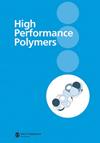六方氮化硼纳米片:聚合物的制造、热性能和应用
IF 1.6
4区 化学
Q3 POLYMER SCIENCE
引用次数: 0
摘要
随着电子工业的飞速发展,传统导热材料的优势逐渐丧失。聚合物急需一种导热系数高、结构稳定、机械性能好、抗氧化性强的材料,这使得六方氮化硼(h-BN)成为聚合物复合材料的一种优良传热填料。氮化硼纳米片(BNNS)是六方氮化硼的单层,理论研究表明,BNNS 比 h-BN 具有更高的热导率(平面内高达 400 Wm-1K-1)。本文全面综述了制备 BNNS 的各种方法,包括机械剥离、液相超声剥离和化学气相沉积(CVD)。此外,还讨论了影响 BNNS 热导率的各种因素,包括晶界、晶粒尺寸和缺陷。然后,进一步讨论了 BNNS 作为填料对聚合物导热性的影响。最后,本文总结了现有的 BNNS 应用,并列出了 BNNS 在各个领域的应用场景。本综述旨在总结前人的工作,并提出制备高导热率 BNNS 含聚合物复合材料的前景和未来发展方向,从而激励人们研究和改进 BNNS 的新制备方法,促进其作为传热材料的实际应用。本文章由计算机程序翻译,如有差异,请以英文原文为准。
Hexagonal boron nitride nanosheets: Fabrication, thermal properties and application in polymers
Traditional thermally conductive materials are gradually losing their advantages as the electronics industry develops rapidly. Polymers are in urgent need of a material with high thermal conductivity, stable structure, good mechanical properties and oxidation resistance, which makes hexagonal boron nitride (h-BN) an excellent heat transfer filler for polymer composites. Boron nitride nanosheets (BNNS) are monolayers of hexagonal boron nitride, and theoretical studies have shown that BNNS have a higher thermal conductivity than h-BN (up to 400 Wm−1 K−1 , in-plane). This paper provides a comprehensive review of various methods for preparing BNNS, including mechanical exfoliation, liquid phase sonication exfoliation and chemical vapor deposition (CVD). In addition, various factors affecting the thermal conductivity of BNNS, including grain boundary, grain size and defects, are also discussed. Then, the influence of BNNS as filler on the thermal conductivity of the polymer was further discussed. Finally, this paper summarizes the existing BNNS applications and lists the application scenarios of BNNS in various fields. The purpose of this review is to summarize the previous work and put forward the prospect and future development direction of preparing high thermal conductivity BNNS-included polymer composites, so as to stimulate the research and improvement of new preparation methods for BNNS and promote its practical application as heat transfer materials.
求助全文
通过发布文献求助,成功后即可免费获取论文全文。
去求助
来源期刊

High Performance Polymers
化学-高分子科学
CiteScore
4.20
自引率
14.30%
发文量
106
审稿时长
1.2 months
期刊介绍:
Health Services Management Research (HSMR) is an authoritative international peer-reviewed journal which publishes theoretically and empirically rigorous research on questions of enduring interest to health-care organizations and systems throughout the world. Examining the real issues confronting health services management, it provides an independent view and cutting edge evidence-based research to guide policy-making and management decision-making. HSMR aims to be a forum serving an international community of academics and researchers on the one hand and healthcare managers, executives, policymakers and clinicians and all health professionals on the other. HSMR wants to make a substantial contribution to both research and managerial practice, with particular emphasis placed on publishing studies which offer actionable findings and on promoting knowledge mobilisation toward theoretical advances. All papers are expected to be of interest and relevance to an international audience. HSMR aims at enhance communication between academics and practitioners concerned with developing, implementing, and analysing health management issues, reforms and innovations primarily in European health systems and in all countries with developed health systems. Papers can report research undertaken in a single country, but they need to locate and explain their findings in an international context, and in international literature.
 求助内容:
求助内容: 应助结果提醒方式:
应助结果提醒方式:


